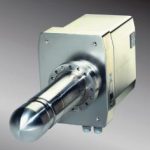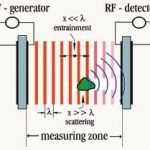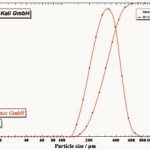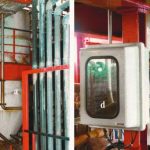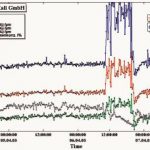Reconciling ever stricter quality standards with the need to curtail costs is the key to success in the production of chemical raw materials. This is especially valid if large tonnage is handled or very precious products are manufactured and processed even in small amounts. The quality of a product thus needs to be identified and influenced right from the outset. For K+S Kali GmbH, Germany, a producer of highly refined salts, this means monitoring salt crystal purity and crystal size inline at an early stage in the production process and maintaining the required quality levels through controlled intervention.
Dr. R. Neidhardt, C. Behrens
K+S Kali GmbH is the fourth largest potassium producer worldwide with an approximate share of 13 %. The company is global market leader for potassium sulphate and magnesium sulphate fertilisers and European leader when it comes to po-tassium for fertilisers and industrial purposes.
K+S Kali GmbH makes highly refined salts at the Werra plant on its Wintershall site in Heringen, central Germany, where several thousand tons of potassium chloride, po-tassium sulphate and sodium chloride are produced. Strict quality standards apply to these high-purity products. They govern not only chemical purity but also physical properties such as crystal size.
The production process for highly refined salts at K+S Kali GmbH consists of a total of seven steps:
- Raw solution production
- Raw solution filtration
- Crystallisation
- Dehydration
- Drying
- Product post-processing
- Filling and packaging
The crucial step that determines particle size is crystallisation of the salts out of the raw solution in evaporators. The grain size that results from the crystallisation process depends on various parameters, such as temperature, pres-sure and retention time in the crystalliser or the amount of seeds. In addition, the crystal size of some products is extremely sensitive to changes in these parameters, for example in temperature ranges close to 1/10 °C.
These interdependencies lead to two challenges for manufacturers. Firstly, the production of a uniform crystal size distribution capable of meeting the very highest quality requirements is founded on extensive experience and a detailed understanding of the needs of process operators. Secondly, the range of pos-sible input parameters for product/process optimisation is enormous.
Crystal size measuring
Inline particle size analysis has to confront both these challenges by measuring the crystal size in its original state without any time loss. In addition, the crystal size must be detected with a high resolution to enable unwanted states, such as the appearance of bimodal or multimodal distributions (more than one main population in the particle size distribution), to be clearly identified.
Very strict requirements must consequently be satisfied by inline particle size analysis equipment. First of all, a re-presentative sample needs to be taken from the process and transferred to the sensor via the shortest possible path, so that it can be analysed without changing its original state. Furthermore, the sample must be measured without any prior conditioning (such as dilution), as the thermodynamic equilibrium could otherwise be altered, changing the grain size distribution at the same time.
The majority of typical analysis methods fail to satisfy these requirements. For one thing, they rely on optical principles and always necessi-tate a certain minimum transparency or entail a certain minimum depth of intrusion into the sample. In addition, the sample must be taken out of the reactor and transferred to the lab in preparation for off-line analysis (for example, for dilution or drying).
One solution that addresses not only the sampling technique itself but also the question of conditioning is the Opus probe from Sympatec (Fig. 1). It is integrated directly into the crystalliser, allowing the suspension to be analysed undiluted and inline in its original state.
The key to the success of this method lies in the use of very-low-energy ultrasonic waves instead of optical waves, permitting the analysis of suspension layers up to 10 mm deep with a solid concentration of up to 70 % by volume (ratio of the solid crystal phase volume to the suspension volume). Hence, tens of thousands of particles are detected and measured simultaneously. The particle size ranges from 0.01 to 3000 µm. The particle size distribution is divided into 31 size classes independently of the visualised particle size range, which can be set infinitely. This allows precise detection of mono- and multimodal distributions owing to the high resolution.
Inline and online Opus probes
The Opus measuring principle is known as ultrasonic extinction and consists of the set-up shown in Figure 2. An ultrasonic generator with a power of less than 5 mW, which has no effect on the actual crystal growth, and an ultrasonic detector are aligned parallel to one another at a predetermined distance (measuring zone). The suspension to be analysed flows between the generator and the detector. The ultrasonic intensity introduced on the generator side is reduced in the suspension by the particles that are present. The attenuation of the sonic waves is measured by the detector and results in the primary signal. In order to exclude the influence of the suspension liquid from the analysis, the background (suspension liquid without particles) is measured beforehand.
The attenuation of ultrasonic waves with a single frequency does not lead directly to a particle size distribution. 31 frequencies are required to divide this distribution into 31 size classes. An Opus analysis is thus a quick scan of 31 frequencies, yielding a complete attenuation spectrum as primary information. This information is then used to calculate the particle size distribution, for instance as a sum or density distribution (Fig. 3).
Ultrasonic extinction also offers several further advantages: amongst other things, the method is unsusceptible to vibration, extreme pH values, abrasion, high pres-sures and changes in flow velocity. The influence of temperature changes can be determined and compensated easily. Opus is therefore suitable for use in suspensions and emulsions up to 120 °C and 40 bar and with a pH value from 1 to 14.
Sensor installation
It is these unique features that make ultrasonic extinction ideal for inline and online analyses and allow the probe to be integrated directly in the process.
In order to analyse the particle size of highly refined salts at K + S Kali GmbH, Opus was installed directly in the DN 200 recirculation pipe of the crystalliser (Fig. 4). The recirculation pipe removes the concentrated substrate from the evaporating floor and reintroduces it at the reactor head, while the suspension passes through the Opus measuring zone without any additional conditioning. The installation procedure itself is very straightforward thanks to the DN 100 flange provided on the sensor. The sensor measuring zone is located directly in the centre of the pipe, and the analysis works with concentrations of around 20 % by volume and at temperatures between 35 and 55 °C.
The sensor does not normally need to be cleaned during the process. Cleaning with hot water (70 to 80 °C) takes place automatically after each water break simply by leaving the sensor in the pipe.
Analysis results
The particle size distribution is visualised on a PC in the control room as a sum or density distribution. In order to make crystal size changes easier to monitor, all the most important size parameters – such as the mean particle diameter x50, the x90 and x10 values and the volume concentration – are shown as a trend diagram throughout the entire production process (Fig. 5).
This revolutionary technology allows the process in the crystalliser to be monitored in real time and crystallisation behaviour to be tracked during the complete crystallisation cycle.
cpp 441
Share:



